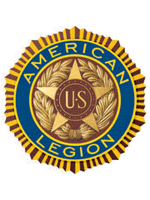
St. Augustine and The Fraternal Orders
Part three of a series
The American Legion
By Geoff Dobson
In 1919, following the end of the Great War, offices of the American Expeditionary Force were concerned about maintaining morale among the troops awaiting transport back to the United States.
Lt. Col. Theodore Roosevelt, Jr. suggested the formation of a veterans group similar to the Grand Army of the Republic and the United Veterans of the Spanish War. In March, approximately 1000 American troops and officers met in Paris and adopted the structure for the future organization to be known as the American Legion.
From that meeting now known as the “Paris Caucus,” arrangements were made for an organizing caucus to be held in St. Louis in May, 1919. The Organizing Caucus on May 19, 1919 issued the charters for the first posts in the United States, Washington, D. C.,, Denver, Colo., Lt. Louis, Mo., and Van Tassell, Wyo. The post in Washington, originally known as the John J. Pershing Post No. 1 and now known as the George Washington Post No. 1 is generally recognized as the first post since its charter was signed first. Ferdinand Branstetter Post No. 1. in Van Tassell also claims to be the first post in that it convened its organizational meeting approximately an hour before Washington.
Since neither of the two principal veterans’ organizations, the Grand Army of the Republic or the United Veterans of the Spanish War would admit veterans of the Great War; the new organization had rapid growth. By the early 1920’s, most towns in Florida, including St. Augustine had an American Legion Post. By 1927, the American Legion was honored as the main representative of American Veterans from World War I.
In September of that year, the American Legion held its convention in Paris. There, General Pershing commander of the American Expeditionary Force, and the American Legion National Commander, Howard P. Savage were hosted by French President Gaston Doumergue. Marshal Ferdinand Foch rode with General Pershing and Commander Savage in the American Legion Parade. The American Legion is one of the few American veterans’ organizations to be honored on a French postage stamp.
Today, St. Augustine has two American Legion posts, Charles F. Hamblen Post, No. 37, located at No. 1 Anderson Circle, and Alton Green Memorial Post No. 194, located at 1029 W. Pearl St. Post No. 37 was organized in 1919 and at first met at the St. Francis Barracks. It is named for C. F. Hamblen (1837-1920) who had come to St. Augustine from Stillwater, Maine, about 1875 and organized the Hamblen Grocery Company and later Hamblen Hardware (still in business).
The post is located in the former Hamblen house. The building was originally a white wooden house containing Queen Ann and Neo-Colonial architectural elements. For a while it housed the Blenmore Hotel. During the 1920’s, the building was revamped to give it a Mediterranean Revival appearance and housed the D. P. Davis organization while it was developing Davis Shores. Following Davis’ mysterious disappearance from the Royal Mail Ship Majestic, the building housed the Hamblen Club for workingmen. In 1940, the building was leased to the American Legion Post which previously met at the St. Francis Barracks. The post is noted as having one of the first woman American Legion commanders in the United States, Daisy R. Westerlund. It also has had two other woman commanders, Connie Kendrick and Agnes Davis.
Alton Green Memorial Post is named after a former Post Commander. The post was originally organized in 1938 as the Lincolnville Post of the “Colored Veterans of World War I.” At first it met in the Benevolent Hall and later at Little Links. In September 1948, it became Lincolnville Post. No. 194 of the American Legion. Following the death of Alton Green, the post was renamed in his honor. (American Legion posts are not permitted to be named after the living.). The post has been recognized by the Veterans Council of St. Johns County as the veterans’ organization of the year for 2006. It sponsors a scholarship fund named in honor of Leo C. Chase, Jr., the first St. Augustinian killed in the Viet Nam War and for Rick Rescoria killed while rescuing persons in the World Trade Center collapse. It has provided Thanksgiving dinners for veterans.
Next Week: Marine Corps, Navy and Coast Guard Leagues.
Geoff Dobson, a St Augustine resident for the past 33 years, is a western and Florida history writer and was former General Counsel for the Florida Department of Transportation. He is a former president of the St. Augustine Historical Society and a regular contributor of nostalgic memories to Historic City News. Before his parents moved to Florida, his father was a Black Angus cattleman. Geoff has written extensively on Wyoming history (“Wyoming Tales and Trails”). When Geoff was in high school, his family lived in the cattle country of eastern Sarasota County. The family spread, which his parents called “Wild Cat Slough,” was reachable only by a pair of ruts over the sand hills and through a snake and gator infested slough. Now, it is an area of four-lane roads, expensive subdivisions, shopping centers, and office parks. . His undergraduate degree is in history. Geoff received his post-graduate degree from the University of Florida. He may be reached at horse.creek.cowboy@gmail.com
Discover more from HISTORIC CITY NEWS
Subscribe to get the latest posts sent to your email.
